Sunning bug, identified
Yesterday on my daily mantis hunt I got excited for a second because I glimpsed a largish bug sunning itself on a bamboo leaf -- my first thought was "mantis!" but then I saw the coloring was wrong. As was the body shape. So not a mantis.
I just had to snap some photos though, as this was a pretty attractive and very willing subject.
What really caught my eye was the coppery metallic look of the wings:
You can't really see it in these photos, but those wing membranes really shine with a golden or coppery glow.
I thought it would be fun to try and identify this insect, so I just started taking as many photos as I could, from every possible angle.
Shape and color of antennae, spikes on legs, the color and shape of wings, markings on the body -- all of these things could be important for identification.
I had so many shots that were virtually identical that I got creative with cropping on some of them.
So I have plenty of photos -- how do I find out exactly what type of bug this is? I started at bugguide.net, and clicked on the little black and white drawings on the left to narrow down my search -- the only category that fit was "true bugs". I then clicked the "browse" tab and found something that looked similar as a starting point. This specimen is a "leaf-footed bug", but there are many different species that fall under that category.
After a few minutes I realized that there were a couple of possibilities in the Leptoglossus genus:
Leptoglossus oppositus, and Leptoglossus fulvicornis.
They're quite similar, but there are a few differences. Both have the metallic wings it seems, and identical body shapes and coloring (as far as I can tell). The oppositus has thicker rear legs though, a white spot on each wing cover, and more prominent white "stripes" around the edge of the abdomen. The fulvicornis has thinner legs and no white spots. Let's take another look:
No white spots, and the stripes are quite muted...
So it looks like my bug is the fulvicornis. Reading more, the oppositus "Feeds on plant juices. This species can be very common on the pods of catalpa trees." while the fulvicornis "Feeds on Magnolia fruits" (from bugguide.net). Since my neighbor's Magnolia is directly opposite from this bamboo, I'd say that confirms it.
It's Leptoglossus fulvicornis.
Although if a visitor to my garden asked what it was, I'd probably just say "a leaf-footed bug". I'm not good at remembering insect species names. Weird, because plant names are no problem for me.
So although my mantis hunt hasn't been successful yet, I've found another cool bug, and identified it too.
I recommend trying to identify the exact species of some bug from your own garden. It's quite informative, and fun too!
.
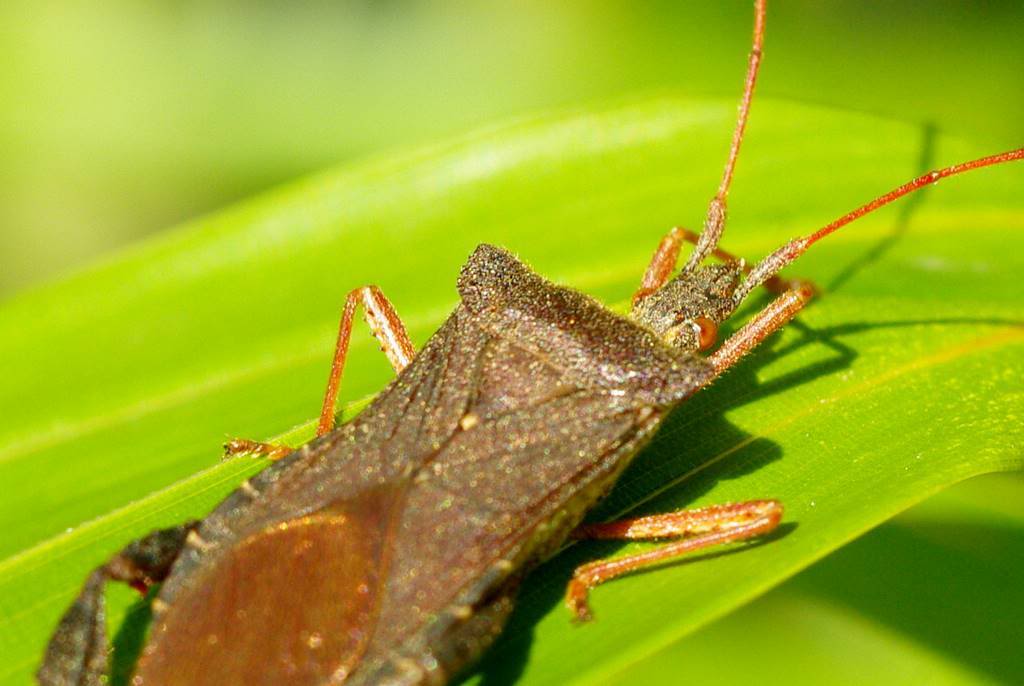
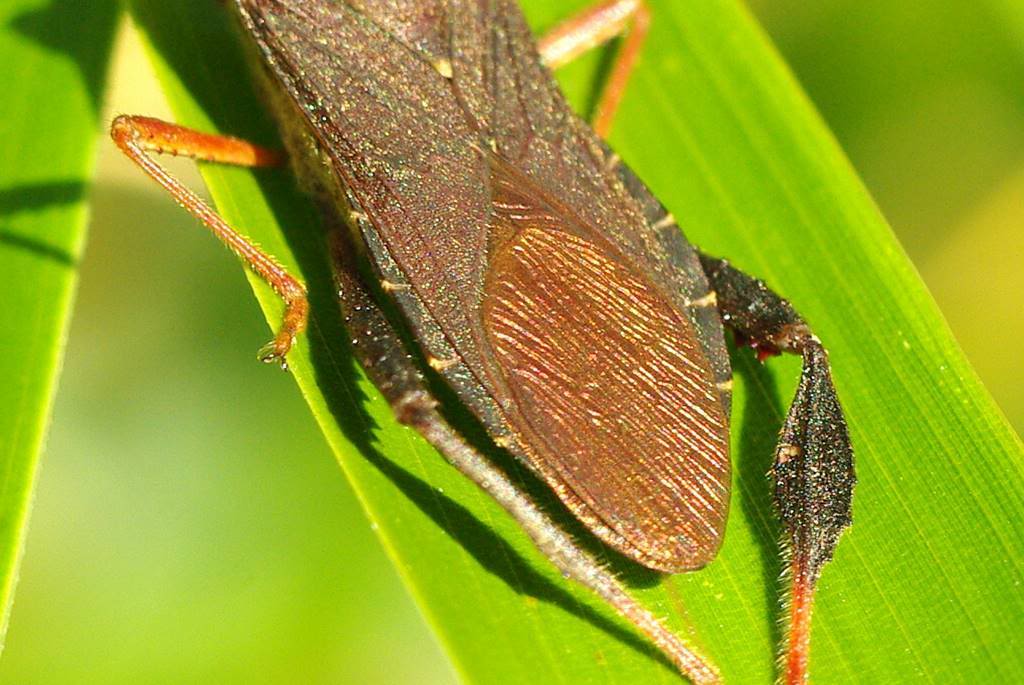

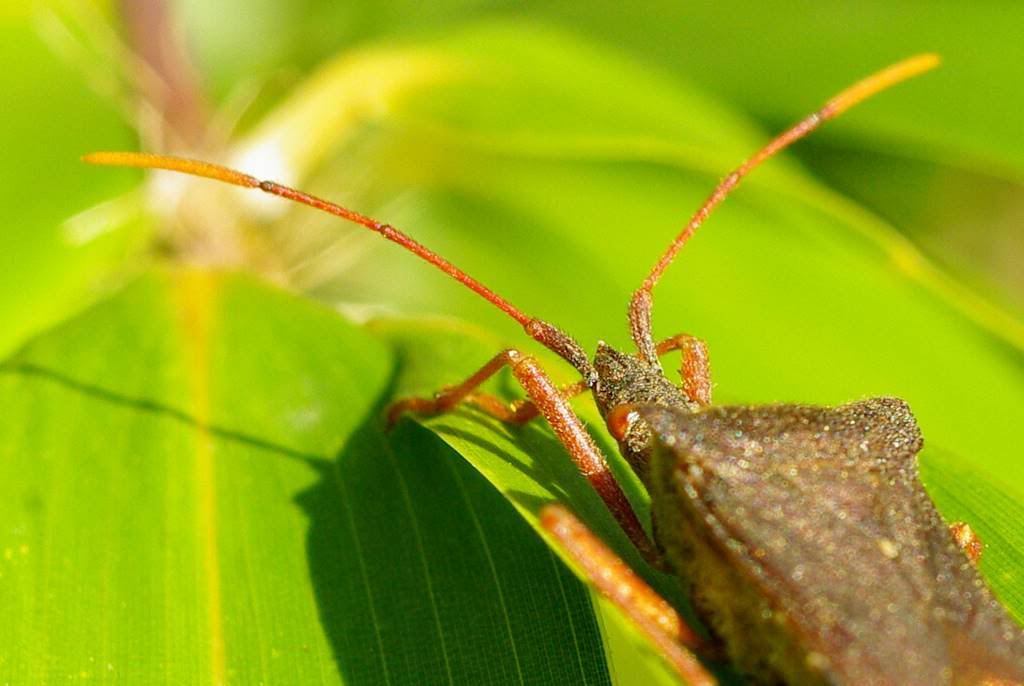
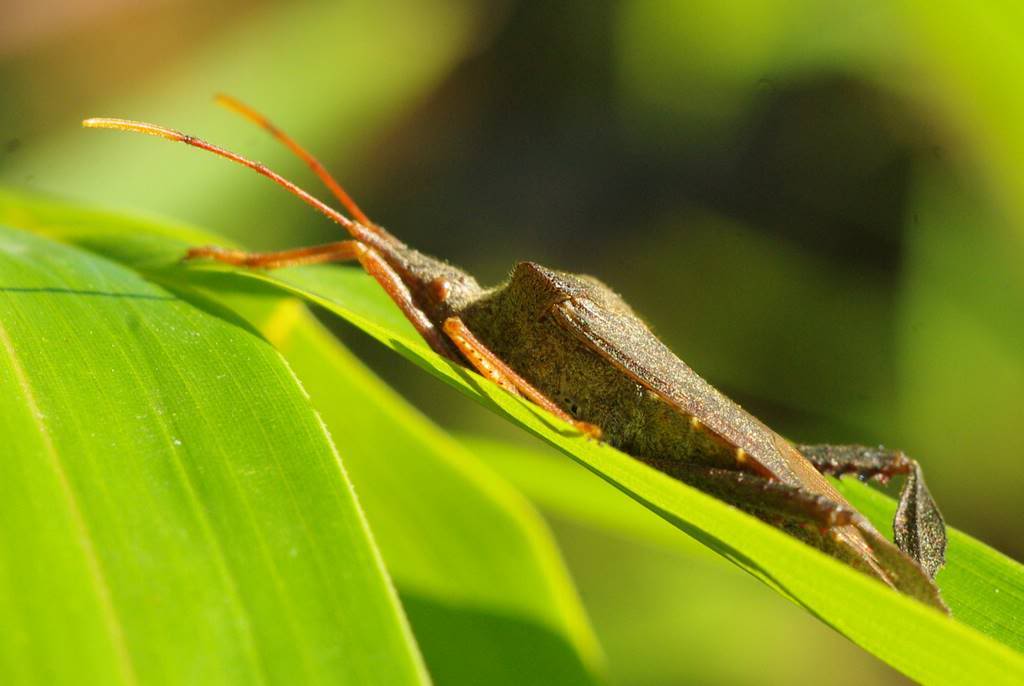
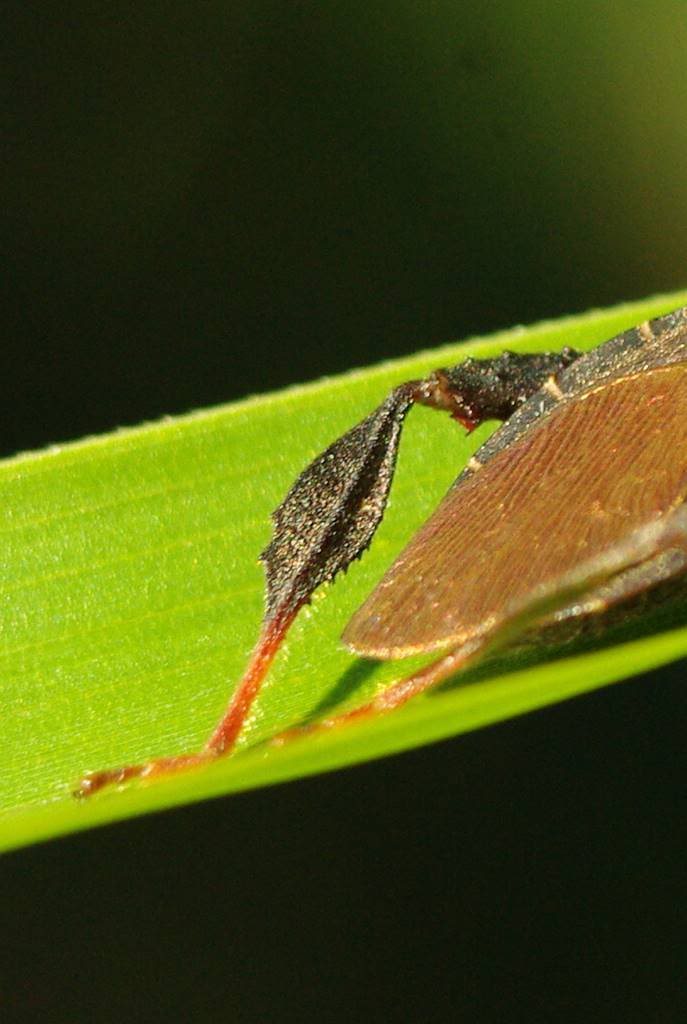
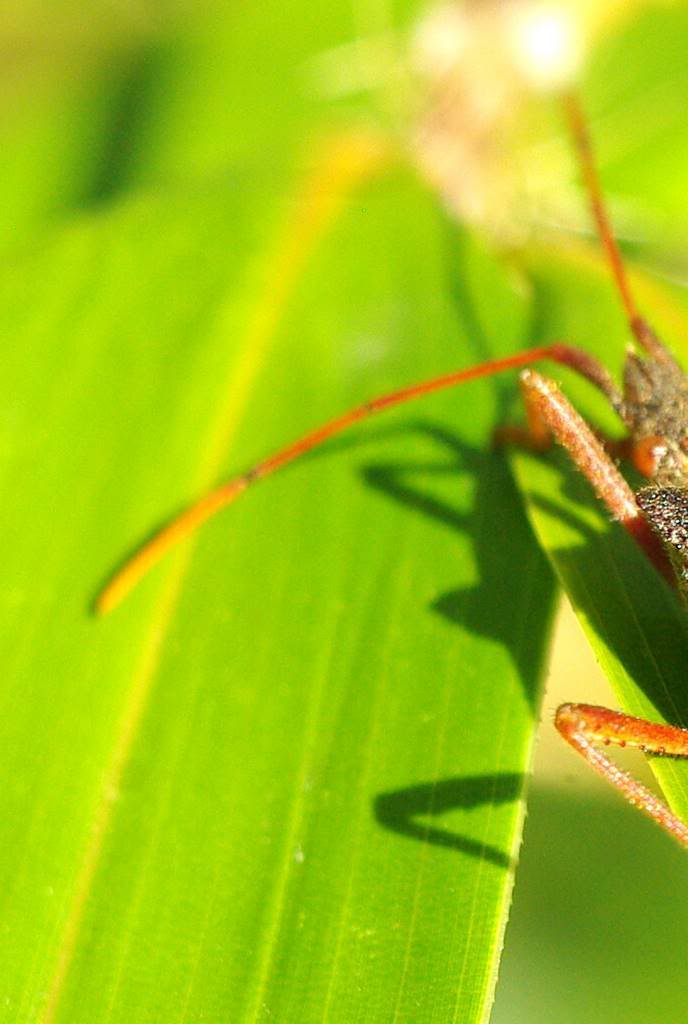
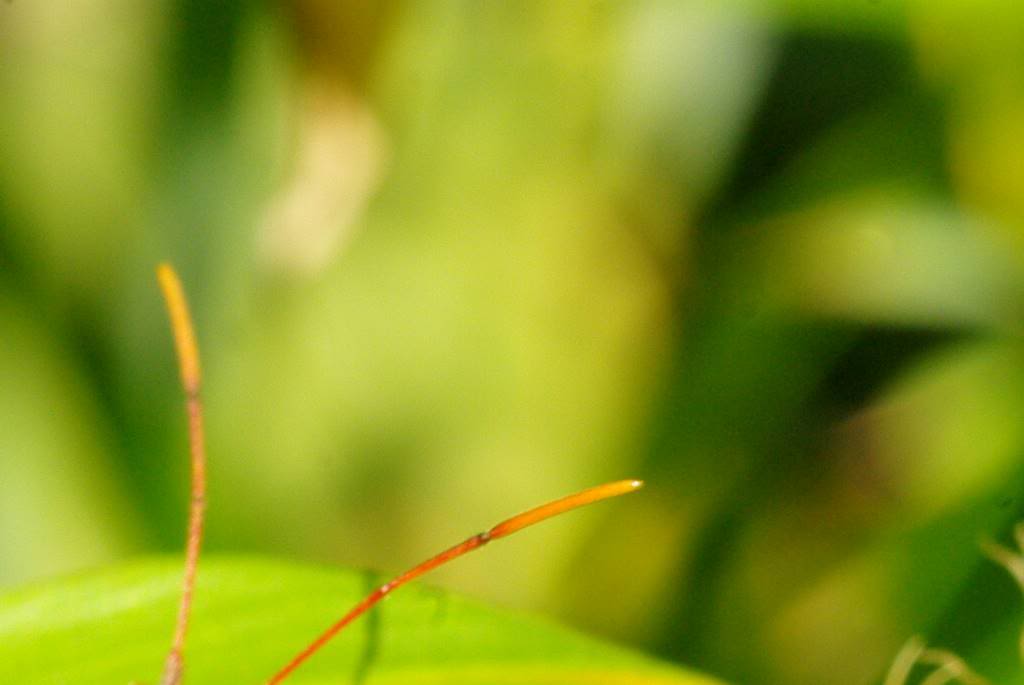

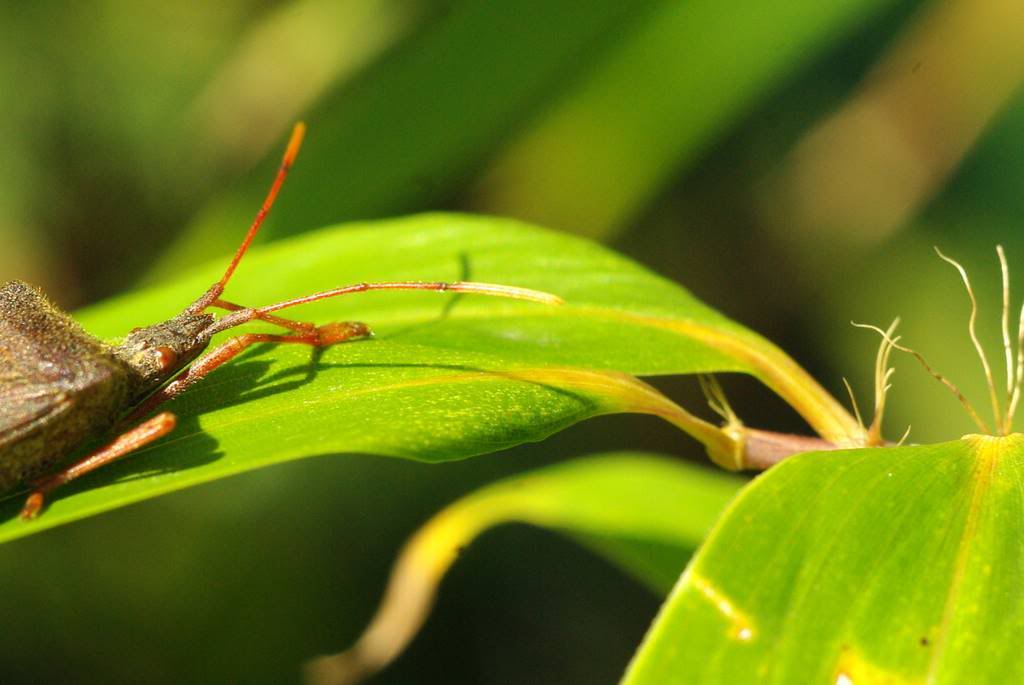
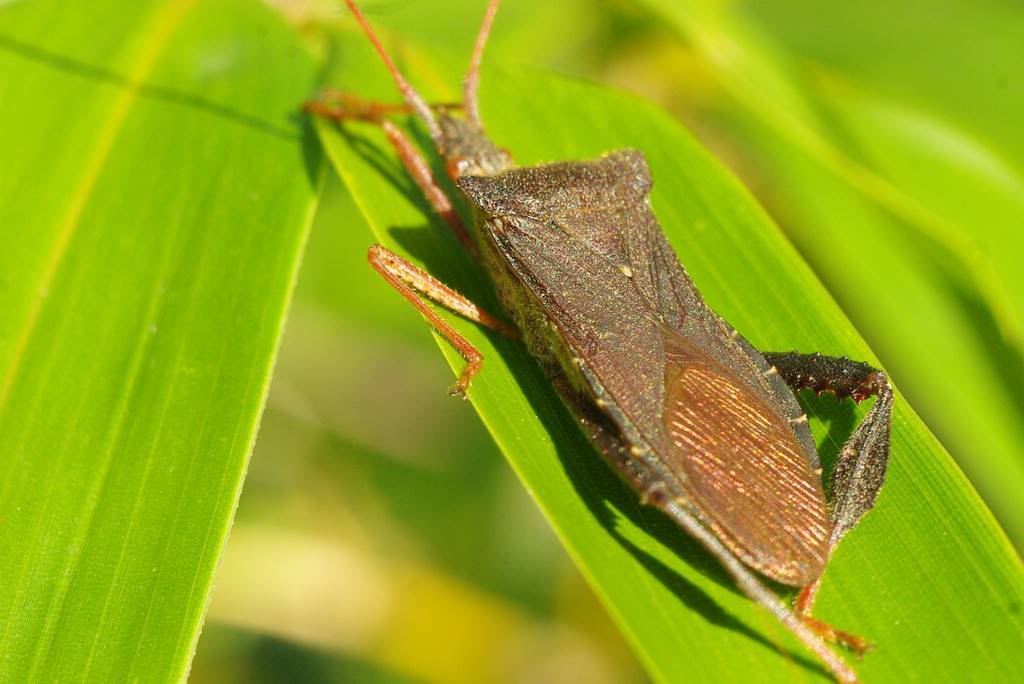




WARNING. TAKE HEED. I knew immediately it was a leaf footed bug because it is the hated bug of my vegetable garden. It sucks the juice out of my tomatoes and peppers leaving them scarred with white pith. I have no qualms about grabbing them between my fingers and squishing them. I always do an early morning check for the orange nymphs. They up to no good I can tell you. Don't let them winter over in your garden.
Great photos! I don't think I've ever seen one of these before.
Oh yes, i will do that, thanks for the link. There's a lot of critters in our place which i really don't know and i refrain from putting scientific names because i know how difficult it is. I am like you, good in memorizing plants but not insects. It is easier for me to ask my entomologist friends if needed, but for plants i try my best.
Lancashire Rose: Although there are other species that feed on the plants you mentioned, note that some species do not. I have no problem with squashing the ones that are found in the veggie garden, but killing every one seen (even when not near the those specific plants) seems like the wrong approach.
Thanks for the warning though and I'll keep an eye out in my horrible veggie bed next season.